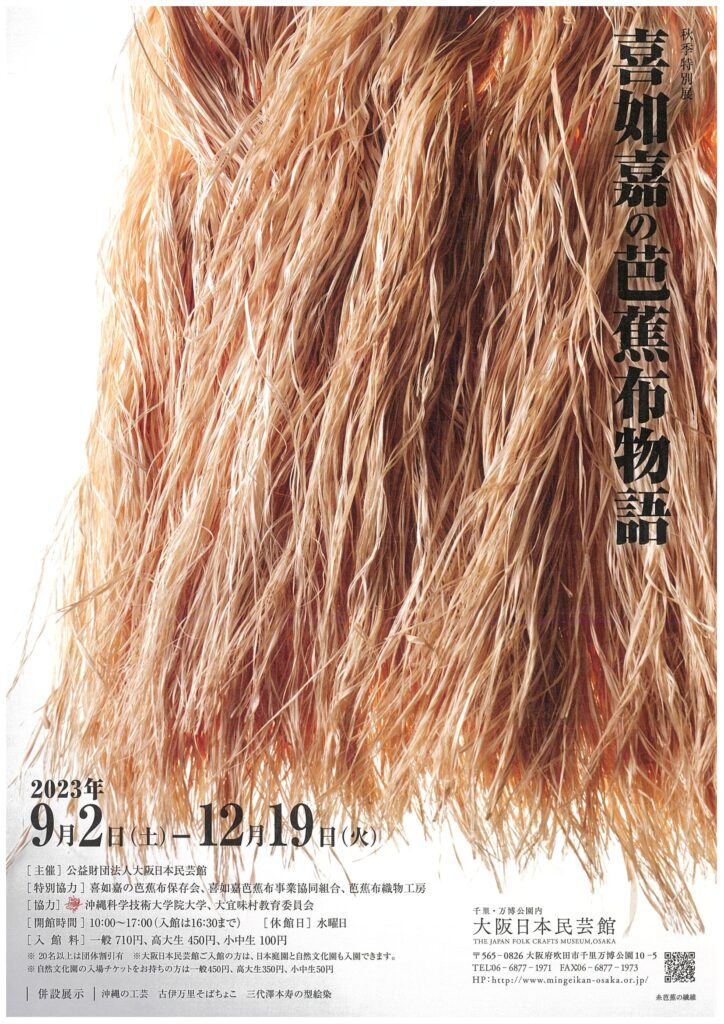2023/08/20
2023 Autumn Special Exhibition “The story of Kijoka basho-fu” ※Closed until September 1st
2023 Autumn Special Exhibition,
“The story of Kijoka basho-fu”
September 2 (Sat)-December 19 (Tue)
※Closed until September 1st

Basho-fu is a banana fiber cloth produced in Okinawa.
In his book “The story of basho-fu” (1942), SoetsuYanagi, founder of the Mingei movement, praised it as one of the most beautiful of all the existing Japanese textiles.
Basho-fu nearly died out during the Second World War, but thanks to an encounter between Toshiko Taira (1921-2022), Soichiro Ohara (President of Kurabo Industries Ltd.) and Kichinosuke Tonomura (the first chief curator of the Kurashiki Museum of Folk Crafts) it was revived.
Taira had visited Kurashiki city, Okayama Prefecture, as a member of the Women’s Volunteer Corps from Kijoka, Okinawa Prefecture and was unable to return to Okinawa after the war.
Ohara, head of major Japanese textile manufacturerKurabo based in Kurashiki, encouraged Taira and several other women to learn weaving while they were there.
They started to learn the methods from Tonomura, and to read Yanagi’s book “The story of basho-fu”.
The book was an important guideline for the subsequent direction of Kijoka basho-fu.
Taira returned to Kijoka and led the women there to revive and re-establish basho-fu.
In 1974 Kijoka basho-fu was recognized as an important cultural property of Japan, and in 2000 Toshiko Taira was recognized as a holder of Intangible Cultural Property (Living National Treasure).
This autumn exhibition displays kasuri ikat cotton cloth woven by Taira while practicing with Tonomura and her workmates, along with small pieces Taira produced shortly after the revival of basho-fu, and obi sashes and kimono with kasuri ikat patterns Taira designed. Also displayed isbasho-fu produced before the Second World War. You can see the lustrous finest-quality fibers that are the key to the beauty of basho-fu.
Please enjoy the story of Kijoka basho-fu which began with Toshiko Tiara’s encounter with Mingei Movement and her association with the Mingei coterie.

